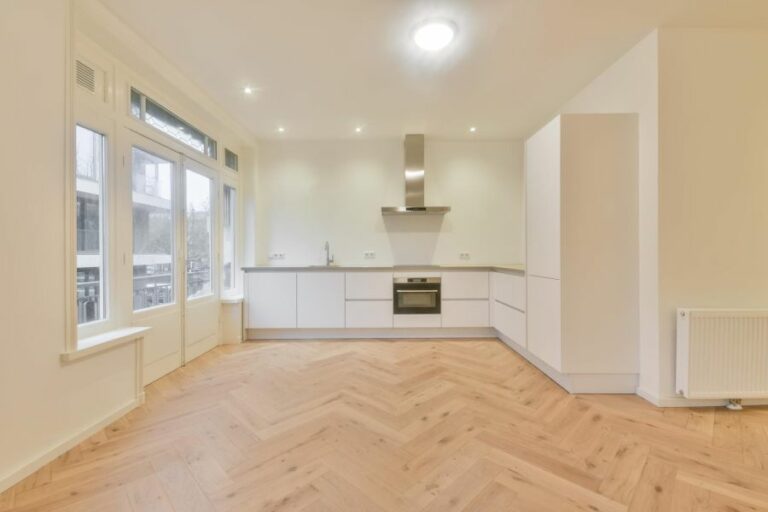Neutral Color Acrylic Wall Paint, 25 Things You Should Know
Are you looking to refresh the walls in your home with a neutral color acrylic wall paint? You’ve come to the right place – we have the expertise and experience to guide your selection. Choosing the perfect shade necessitates considering room size, natural light, and your desired ambiance. We’ve got tips and recommendations that will help you achieve a versatile and modern look with a neutral color paint that meets both your aesthetic and practical needs and stands the test of time.
Neutral color acrylic wall paint:
Neutral color acrylic wall paint is a versatile and timeless choice for home decorating due to its ability to create a serene, calming environment. These colors, which include shades of black, white, and gray, don’t appear on a color wheel and have varying undertones. Popular for their compatibility with various decors, neutral wall paints can enhance natural light, increase resale value, and allow easy updates to room accents without repainting.

Explore the world of neutral color acrylic wall paint, its benefits, versatility, and how it can transform your living spaces! Discover expert tips on choosing the perfect shade and application techniques. Keep reading to unveil the secrets to attaining that timeless, elegant ambiance.
Contents
- 1 Acrylic Wall Paint in Neutral Shades
- 2 Understanding Neutral Colors in Acrylic Artwork
- 3 Evaluating Acrylic Paint for Wall Applications
- 4 Top Acrylic Paint Options for Wall Surfaces
- 5 Drawbacks of Using Acrylic Paint on Wall Structures
Acrylic Wall Paint in Neutral Shades
• The Basics of Neutral Colors
Neutral colors are those that don’t appear on a color wheel and don’t have any saturation or chroma. They include shades of black, white, and gray and can have a variety of undertones, such as red, green, or blue, depending on the amount of color added to them.
Neutral acrylic wall paints are a popular choice for home decorating because of their versatility and ability to create a serene, calming environment.
• Advantages of Neutral Acrylic Wall Paint
– Timelessness and Versatility
Neutral-colored walls are known for their timelessness, which means they will never go out of style or look dated. This is especially important when it comes to wall paint, as repainting entire rooms can be a time-consuming and expensive process.
Neutral walls are also incredibly versatile, allowing homeowners to change accent colors or decor easily without having to repaint the whole room.
– Increases Home Resale Value
Many real estate agents recommend painting your walls with a neutral color before selling your home. This is because neutral walls serve as a blank canvas, allowing potential buyers to visualize their belongings and interior design in the space.
Additionally, neutral colors are widely appealing and can help increase your home’s resale value.
– Enhances Natural Light
Neutral acrylic wall paint in lighter shades can help enhance the natural light in a room, making the space feel more open and airy. This is particularly beneficial for small rooms or those with limited daylight.
Light neutral shades reflect light more efficiently than darker colors, helping to create a brighter atmosphere.
• Choosing the Right Neutral Color
Neutral colors can vary in undertones and darkness, making it essential to choose the right shade for your space. When selecting a neutral acrylic wall paint, consider the following factors:
– Room Size
Lighter neutral shades work well in smaller spaces, while darker hues can be used to create a cozy atmosphere in larger rooms. Keep in mind the amount of natural light in the room and the overall ambiance you wish to create when deciding on a neutral shade.
– Undertones
Neutral colors can have varying undertones, such as warm, cool, or neutral. Consider the undertones of your existing furniture, flooring, and accessories when choosing a wall paint shade to ensure it complements your decor.
– Test Swatches
Before committing to a specific paint color, it is highly recommended that you test it out by applying swatches to your walls. This will allow you to see how the paint appears in different lighting throughout the day and next to your furniture and accessories, helping you make a more informed decision.
• Tips for Painting with Neutral Acrylic Wall Paint
– Quality Matters
Investing in high-quality neutral acrylic wall paint is essential, as cheaper alternatives may not provide the desired coverage, have poor durability, or peel over time. Look for reputable paint brands with good reviews to ensure a long-lasting and professional-looking finish.
– Use a Primer
It’s always a good idea to use a primer before applying your neutral acrylic wall paint, as this will help provide a smoother finish, hide imperfections, and ensure a better bond between the paint and surface.
– Apply Multiple Coats
For the best results and coverage, it’s recommended to apply at least two coats of neutral acrylic wall paint. This will ensure a more uniform appearance, as well as provide better durability and resistance to wear and tear.
– Clean, Prep, and Tape
Before beginning your paint job, it’s essential to thoroughly clean the walls, remove any loose or peeling paint and repair any cracks or damage. Additionally, use painter’s tape to mask off baseboards, molding, and other surfaces you want to protect from paint splatters.
• In Conclusion
Neutral color acrylic wall paint is an excellent choice for homeowners looking to create a timeless, versatile, and calming atmosphere in their living spaces.
By selecting the right shade and following proper painting techniques, you can transform your room and enjoy the many benefits of neutral walls for years to come.
Understanding Neutral Colors in Acrylic Artwork
Understanding the concept of neutral colors is essential for any artist as they play a crucial role in creating harmony, depth, and balance in an artwork.
• Defining Neutral Colors in Acrylic Painting
Neutral colors, also known as earthy or muted tones, are colors that do not overpower other colors in a composition. These colors appear less intense and have a subdued appearance compared to the vividness and saturation of primary and secondary colors.
The primary neutral colors include white, black, gray, and brown. However, artists also consider various tints, shades, and tones of these colors as neutral.
• Creating Neutral Colors in Acrylic Painting
An in-depth understanding of color theory and mixing techniques is necessary for artists to create the desired neutral colors in their artwork. The three methods to make neutral colors using acrylics are discussed below.
– Method 1: Mixing Primary Colors
Mixing equal parts of the three primary colors – red, blue, and yellow – is an effective way to create a balanced neutral color, usually a shade of brown or gray.
Adjusting the proportions can result in different neutral tones. For instance, more blue may yield a cooler gray, while additional yellow generates a beige or cream color.
– Method 2: Mixing Complementary Colors
Another easy method to create neutral colors is by mixing two complementary colors (colors opposite each other on the color wheel). Typical blends include red/green, blue/orange, and yellow/purple. Experimenting with the proportions of the two colors can yield a wide variety of neutral tones.
– Method 3: Adding Gray or Brown
A quick way to neutralize the intensity of a color is by adding a small amount of gray or brown. This method may not produce a pure neutral color but helps achieve a more subdued and earthy version of the original color.
• Utilizing Neutral Colors in Acrylic Painting
Including neutral colors in a composition enables artists to create harmonious and visually appealing artwork. Some of the primary applications of neutral colors in acrylic painting are highlighted below.
– Establishing a Color Harmony
Neutral colors seamlessly integrate different colors within a composition, preventing the artwork from appearing chaotic. They create a visual balance by softening the edges between distinct colors, making the overall appearance more cohesive and pleasing to the eye.
– Enhancing Depth Perception
Incorporating neutral colors in an artwork is an effective way to create depth and emphasize the three-dimensional effect. Artists can experiment with tints and shades of neutral colors to establish tonal values and highlights, adding more realism and depth to their paintings.
– Defining a Focal Point
Using contrasting tones, and mixing neutral colors with bold and vivid hues, can help artists direct the viewer’s attention to a specific area in their artwork. This technique emphasizes the focal point and establishes a visual hierarchy.
– Grounding a Composition
Artists can create a sense of grounding and stability in their paintings by incorporating neutral colors. Earthy tones like brown or gray can be an excellent choice for backgrounds, as they prevent visual noise and allow the vital elements to stand out.
• Tips for Mastering the Use of Neutral Colors
To achieve professional results in acrylic painting using neutral colors, consider the following recommendations:
- Practice color mixing: Experiment with different primary and complementary color combinations to gain a deeper understanding of creating neutral colors and their various shades.
- Invest in a quality color wheel: A comprehensive color wheel can be a valuable reference tool while working with neutral colors in acrylic painting.
- Maintain color harmony: Artists should be mindful of the overall color harmony in their composition and gradually introduce neutral colors in the right proportions to achieve visual balance.
- Experiment with undertones: Understanding the warm and cool undertones of neutral colors can help in creating more vibrant and dynamic artwork.
Neutral colors are an essential aspect of acrylic painting, offering artists a versatile range of tones to work with while creating harmonious, balanced, and engaging compositions.
By mastering the techniques of making neutral colors and understanding their applications, artists can enhance their ability to produce compelling and captivating artwork.
Color | Description |
|---|---|
Gray | A mix of black and white, gray is a balanced neutral color that can create depth and works well with other colors in a composition. |
Brown | Combining all three primary colors, brown is a versatile neutral color that can create a warm, earthy feel in a painting. |
Black | While often considered an absence of color, black can be used to create contrast and shadows in a painting, making other colors stand out. |
White | White can be used to lighten other colors and create highlights, adding depth and brightness to a painting. |
Beige | A light brown color with a touch of gray, beige can be used to create soft backgrounds and complements other colors in a painting. |
Taupe | A mix of gray and brown, taupe is a neutral color that can add depth and warmth to a painting without drawing attention away from other elements. |
Evaluating Acrylic Paint for Wall Applications
Acrylic paints have become a popular choice for both artists and homeowners alike due to their versatility, durability, and ease of application.
• Overview of Acrylic Paint
Before delving into the suitability of acrylic color for walls, it is crucial to understand the basics of this paint type.
Acrylic paint is a fast-drying, water-based paint made from pigments suspended in an acrylic polymer emulsion. It is highly versatile and can be used on various surfaces, including canvas, paper, wood, and even metal.
Acrylic paint is known for its durability, as it is resistant to fading, cracking, and chipping, making it an excellent option for walls. Moreover, acrylic paint can be easily cleaned with water or mild soap, making it a low-maintenance option for homeowners.
• Advantages of Using Acrylic Color on Walls
There are several reasons why acrylic color is an excellent choice for painting walls, including:
– Durability
As mentioned earlier, acrylic paint is highly resistant to fading, cracking, and chipping. Its durability makes it an ideal choice for wall painting, as it can withstand the test of time and maintain its vibrant appearance even in high-traffic areas.
– Flexibility
Acrylic paint is highly flexible, allowing it to expand and contract with the natural movement of walls. This characteristic prevents the paint from cracking or peeling and ensures a longer-lasting finish.
– Quick Drying
One of the significant benefits of acrylic paint is its quick drying time. This feature can be a game-changer for homeowners and professional painters alike, as it allows for multiple coats to be applied in a single day, speeding up the overall painting process.
– Easy Clean-Up
Acrylic paint is water-based, meaning it can be easily cleaned up with water or mild soap. This ease of clean-up can save considerable time and effort and minimize the risk of paint stains on clothing or furniture.
– Eco-Friendly
Acrylic paint has low levels of volatile organic compounds (VOCs), making it an eco-friendly option compared to oil-based paints. Lower VOC levels mean that acrylic paint has less harmful impact on the environment and contributes to better indoor air quality.
– Wide Range of Finishes
Acrylic paint is available in a wide range of finishes, including matte, satin, semi-gloss, and gloss. This variety allows homeowners to choose the perfect finish for their walls, taking into consideration factors such as room size, natural light, and desired ambiance.
• Disadvantages of Using Acrylic Color on Walls
While acrylic paint has numerous benefits, there are a few drawbacks to consider before using it on walls:
– Not Suitable for High-Moisture Areas
Acrylic paint is not the best choice for areas with high levels of moisture, such as bathrooms and kitchens. In these environments, moisture can seep through the paint and cause the paint to bubble, peel or provide a breeding ground for mold and mildew.
For high-moisture areas, it’s recommended to use a specialized paint formulated for such environments.
– Limited Coverage
Acrylic paint typically has a lower coverage rate compared to other paint types, meaning that more coats may be required to achieve the desired level of opacity. This factor can lead to increased paint and labor costs, especially for larger projects.
• Expert Recommendations
In conclusion, acrylic color is an excellent choice for painting walls. Its versatility, durability, and ease of application make it an attractive option for homeowners looking to refresh their living spaces.
However, it’s essential to be aware of the limitations of acrylic paint, such as its unsuitability for high-moisture areas, and to plan accordingly.
To learn more about selecting the right paint for your specific project, consider visiting resources like the U.S. Environmental Protection Agency’s guide on selecting the right paint, which provides valuable information on the environmental impact, indoor air quality, and health concerns related to different paint options.
Ultimately, it is essential to carefully consider your particular needs and preferences when choosing paint for your walls. Once the right paint has been selected, the result will be a beautiful, long-lasting finish that enhances both the appearance and comfort of your living space.
Top Acrylic Paint Options for Wall Surfaces
With countless brands and styles to choose from, it’s essential to know which acrylic paint is best for your walls.
• Types of Acrylic Paints
There are many different types of acrylic paints on the market, each with their properties and features.
– Artist-Grade Acrylic Paints
Artist-grade acrylic paints have the highest quality pigments and offer excellent coverage, lightfastness, and durability. These paints are suitable for both interior and exterior wall applications. A popular artist-grade acrylic paint brand is Golden.
– Student-Grade Acrylic Paints
Budget-conscious painters might consider student-grade acrylic paints, which have a more affordable price range. However, they generally contain fewer pigments and might require more coats for full coverage. This type of paint is excellent for DIY wall projects or when working with a smaller budget.
– Exterior-Grade Acrylic Paints
Exterior-grade acrylic paints are specially formulated to withstand harsh weather conditions like rain, sunlight, and fluctuating temperatures. These will provide extra durability, fading resistance, and adherence to surfaces for outdoor wall applications.
• Top Acrylic Paint Brands for Walls
Here are three recommended brands of acrylic paints suitable for walls based on their quality, versatility, and performance:
1. Sherwin-Williams
Sherwin-Williams is a renowned brand in the paint industry for its quality, durability, and broad color selection. Their ‘SuperPaint’ Acrylic Latex is an excellent option for interior walls, while ‘Duration Exterior’ Acrylic Latex is designed for exterior walls.
2. Behr
Another industry-leading brand, Behr, offers a comprehensive range of acrylic paints with excellent coverage and durability. Their ‘Premium Plus’ Interior Paint & Primer and ‘Premium Plus’ Exterior Paint & Primer are recommended choices for wall applications.
3. Benjamin Moore
Benjamin Moore is known for their superior quality and color options. Their ‘Regal Select’ interior paint and ‘Aura’ exterior paint are both acrylic paints suitable for wall applications. The ‘Aura’ line, in particular, boasts advanced color lock technology, providing excellent long-term color retention.
• Factors to Consider When Choosing Acrylic Paint for Walls
1. Coverage and Durability
The primary consideration should be the paint’s ability to provide optimal coverage with a single application. More durable paints can withstand regular cleaning and scrubbing, an essential factor for high-traffic spaces.
2. Finish
Acrylic paints come in various finishes, including matte, satin, semi-gloss, and gloss. Matte or satin finishes are recommended for walls, as they offer a smooth appearance without excessive shine or reflection.
3. Drying Time
Consider the drying time of the acrylic paint, especially when working on more extensive projects. Fast-drying acrylic paints will allow you to apply additional coats or start adding decorative elements sooner.
4. VOCs (Volatile Organic Compounds)
Lower-VOC paints are recommended for interior walls as they emit fewer chemicals and fumes, which is beneficial for both the environment and occupants’ health. Top brands are increasingly offering low-VOC, eco-friendly options.
• Tips for Painting Walls with Acrylic Paint
- Surface Preparation: Before painting your walls, ensure they are clean, dry, and free of dust or debris. Fill any holes or cracks with a suitable filler, sand smooth, and remove any leftover dust.
- Priming: Priming your walls with a compatible acrylic primer ensures proper paint adherence, better coverage, and long-lasting results. This step is especially crucial for porous or stained surfaces.
- Technique: Use a good-quality brush or roller to apply acrylic paint. Start painting in a “W” pattern, then fill in the gaps for even coverage.
- Drying Time: Allow enough time for the paint to dry before adding any additional coats or decorations.
In conclusion, Sherwin-Williams, Behr, and Benjamin Moore are top-recommended brands for acrylic paint suitable for walls. When selecting the perfect paint, consider factors like coverage, durability, finish, drying time, and VOC content.
Proper surface preparation, priming, and painting techniques will ensure professional results and the longevity of your paint job.
Rank | Brand | Product | Key Features |
|---|---|---|---|
1 | Benjamin Moore | Regal Select | Durable, easy to clean, low VOCs |
2 | Behr | Marquee | One-coat coverage, excellent durability, low VOCs |
3 | Sherwin-Williams | Emerald Interior | Washable, durable, low VOCs |
4 | PPG | Timeless Interior Paint | One-coat coverage, good durability, stain-resistant |
5 | Dunn-Edwards | Everest | Smooth finish, covers imperfections, low odor |
Drawbacks of Using Acrylic Paint on Wall Structures
While acrylic paint has become a popular choice for various applications, including painting walls, it also has some downsides that might deter you from using it.
• Drying Time and Workability
One of the major drawbacks of acrylic paint is its quick drying time. While this can be an advantage in certain circumstances, it can also prove to be a disadvantage when you need more time to work on your wall painting project.
The fast-drying nature of acrylic paint means that it can sometimes dry faster than you can paint, which could result in visible brush strokes, inconsistent color coverage, and an overall uneven appearance of the paint on the wall.
To avoid these issues, it’s important to work quickly and efficiently, which may not always be feasible for everyone.
Golden Paints provides a useful guide on how to extend the drying time of acrylic paint with various additives, which can help alleviate this disadvantage.
• Adhesion Issues
Acrylic paint can sometimes have difficulty adhering properly to certain surfaces, especially if the surface is greasy, oily, or has remnants of old paint. This can cause the acrylic paint to peel, chip, or crack over time, detracting from the overall appearance and durability of the paint job.
To avoid these problems, it is essential to thoroughly clean and prepare the surface before applying acrylic paint, which can be time-consuming and tedious.
• Limited Blending and Finishing Options
Acrylic paint does not blend as easily as other paints, such as oil-based paints, which can limit your options when it comes to finishing and blending colors on your walls.
This is because acrylic paint dries quickly and forms a solid layer, making it difficult to manipulate and blend the paint once it has been applied to the wall. This can lead to a painting job that lacks depth, texture, and nuance.
• Sensitivity to Temperature and Humidity
Acrylic paint is more susceptible to temperature and humidity changes than other types of paint, such as oil-based or latex paints. Extreme temperature fluctuations, high humidity levels, and direct sunlight can affect the drying time, consistency, and overall durability of acrylic paint on walls.
These factors can cause the paint to crack, fade, or peel prematurely, leading to a less-than-perfect paint job. To minimize these issues, it is essential to apply acrylic paint during optimal conditions and invest in high-quality, weather-resistant paint.
• Health and Environmental Concerns
While acrylic paint is often considered a more environmentally friendly option compared to oil-based paints, it is not without its health and environmental issues.
Acrylic paint contains various chemicals, some of which can be harmful when inhaled or ingested. The off-gassing of these chemicals during the drying process can also contribute to indoor air pollution.
Furthermore, the production and disposal of acrylic paint can have negative environmental impacts. The Environmental Protection Agency offers guidelines on the proper disposal of acrylic paint to mitigate its impact on the environment.
It is crucial to be aware of these concerns and take necessary precautions when using acrylic paint on your walls.
• Cost Considerations
High-quality acrylic paint can be more expensive than other paint options, such as latex or oil-based paints. This can potentially offset any advantages gained from the paint’s fast-drying properties or environmental friendliness.
Budget-conscious consumers may want to consider alternative paint options before committing to acrylic paint for their wall painting projects.
• Conclusion
While acrylic paint offers many benefits for certain applications, it also has its share of disadvantages when used on walls.
The quick drying time, adhesion issues, limited blending and finishing options, sensitivity to temperature and humidity, health and environmental concerns, and cost considerations make acrylic paint a less-than-ideal choice for painting walls in some cases.
It is important to carefully weigh the pros and cons of using acrylic paint on your walls before making a decision. Based on your specific needs and circumstances, you may find that other paint options, such as oil-based or latex paints, might be better suited for your wall painting project.
| Disadvantages of Using Acrylic Paint on Wall Structures |
|---|
| Less durable compared to other types of paint |
| Prone to chipping and peeling over time |
| May be difficult to achieve an even, smooth finish |
| Dries quickly, making it harder to correct mistakes |
| Some acrylic paints can have a strong odor |
| Can be damaging to the environment, as it contains non-biodegradable microplastics |







